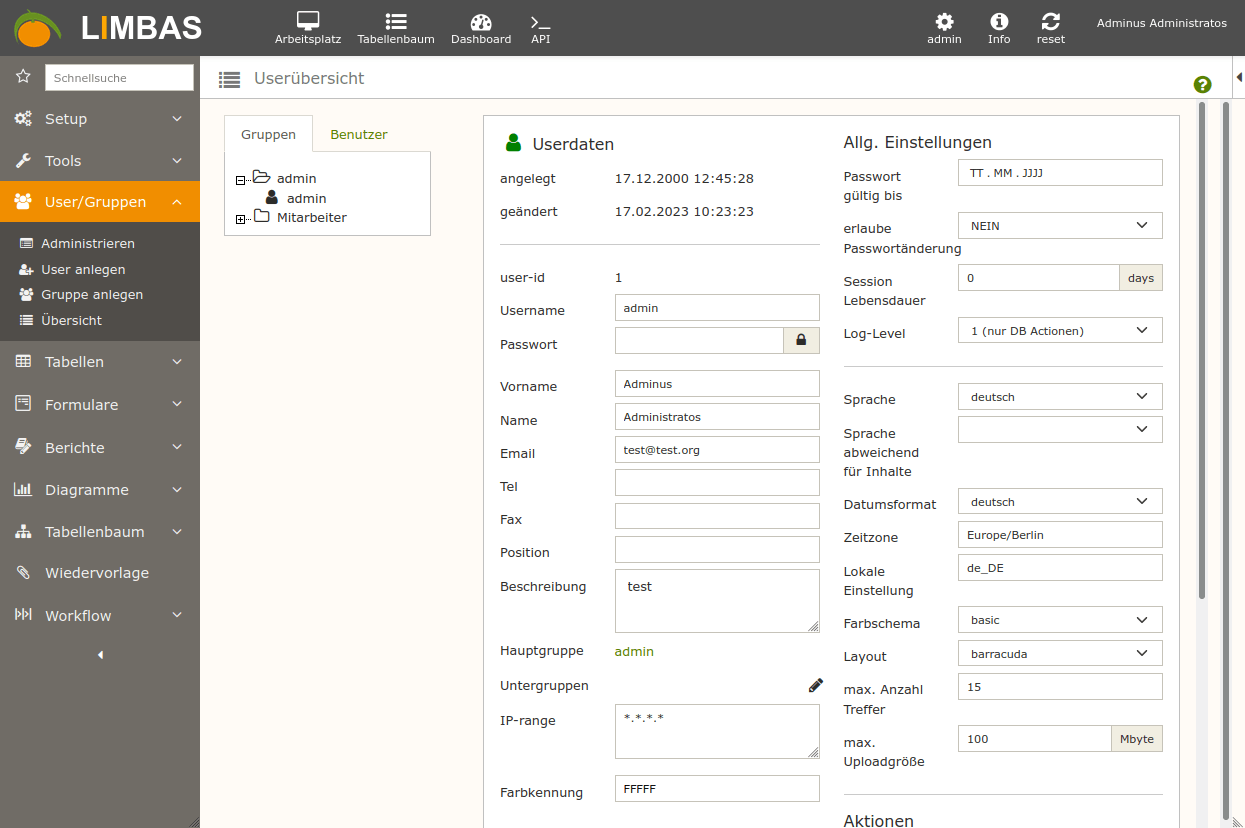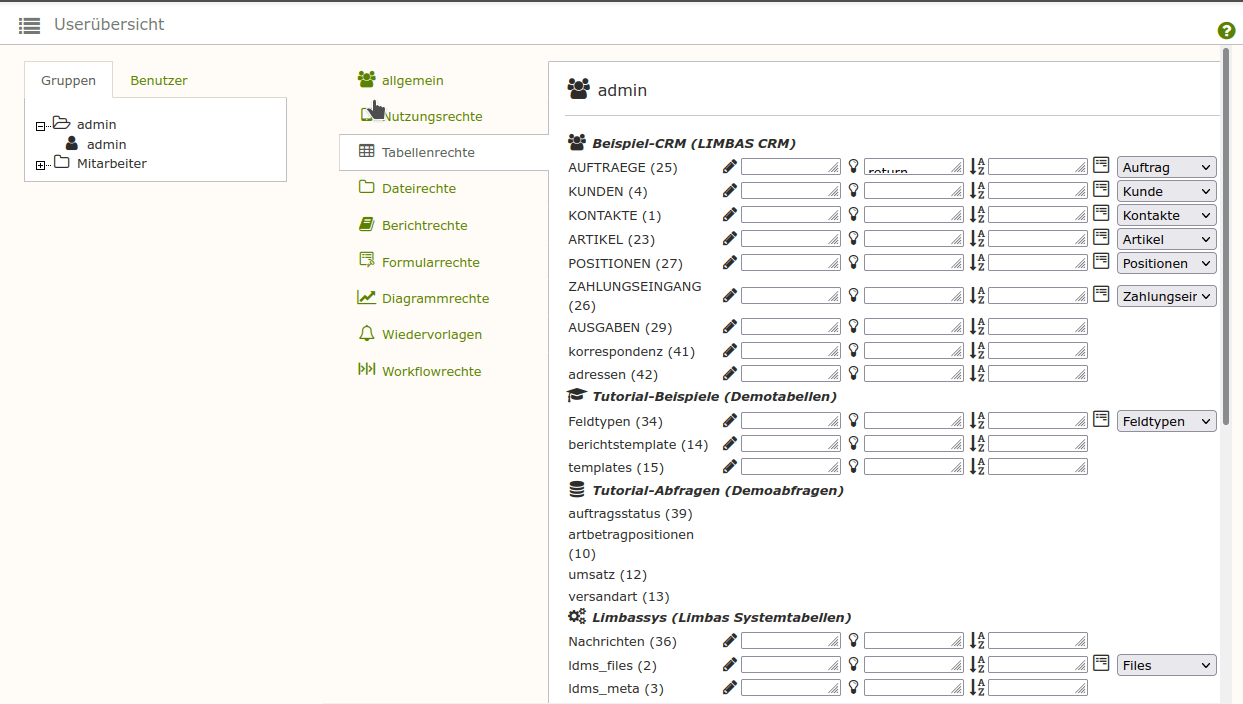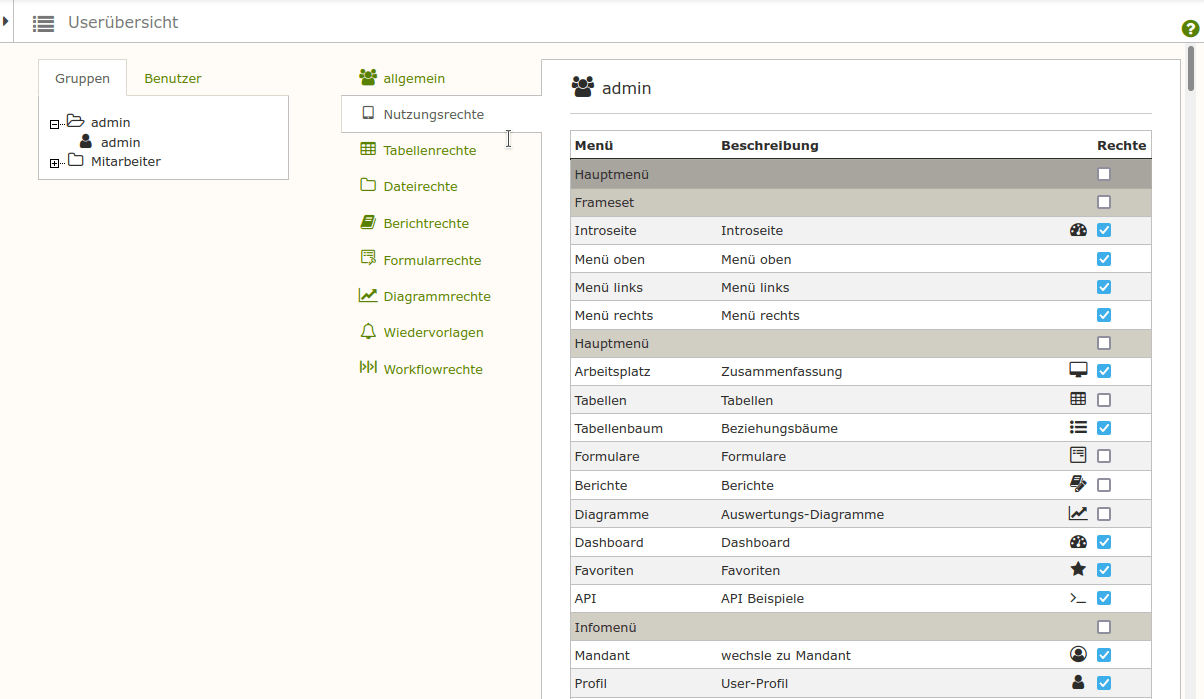Rights management
With the help of the rights editor, it is completely possible to assign granular rights over the entire system. You should first determine which users and user groups can view, edit, or delete data. These rights are stipulated for individual tables, fields, forms, reports and functions. Group-based rules for versioning can also be defined and default values set, even user-defined functions for 'read or write' rights can be assigned. The rights system, like everything else in LIMBAS, is operated via the browser.
The most important functions:
- User administration
- Assignment table rights (read, write, delete, copy)
- Mandatory fields definition
- Rights for archive and record locks
- Reporting and form rights
- Access restriction (IP range, proxy, session duration, upload limit, password validity)
- Personalization (language, layout, color scheme, date format, time zone)
- Group management
- Hide tables
- Extended rights
- Individual data records assignment
- Default value definition
- General function / menu rights assignment
- User statistics
- File rights (read, edit, add, delete, create folders, lock files)

In order to make administration easier, employees can be assigned to in-house groups. This means for example, an employee who is assigned to the sales group, automatically assigns all sales rights. He can be represented in several groups. For example, an employee would be able to see if a customer has unpaid invoices and can point them out.
However, the process of invoicing remains the responsibility of the accounting department. The rights system also applies to extensions, API and LIMBAS interfaces.
However, the process of invoicing remains the responsibility of the accounting department. The rights system also applies to extensions, API and LIMBAS interfaces.


